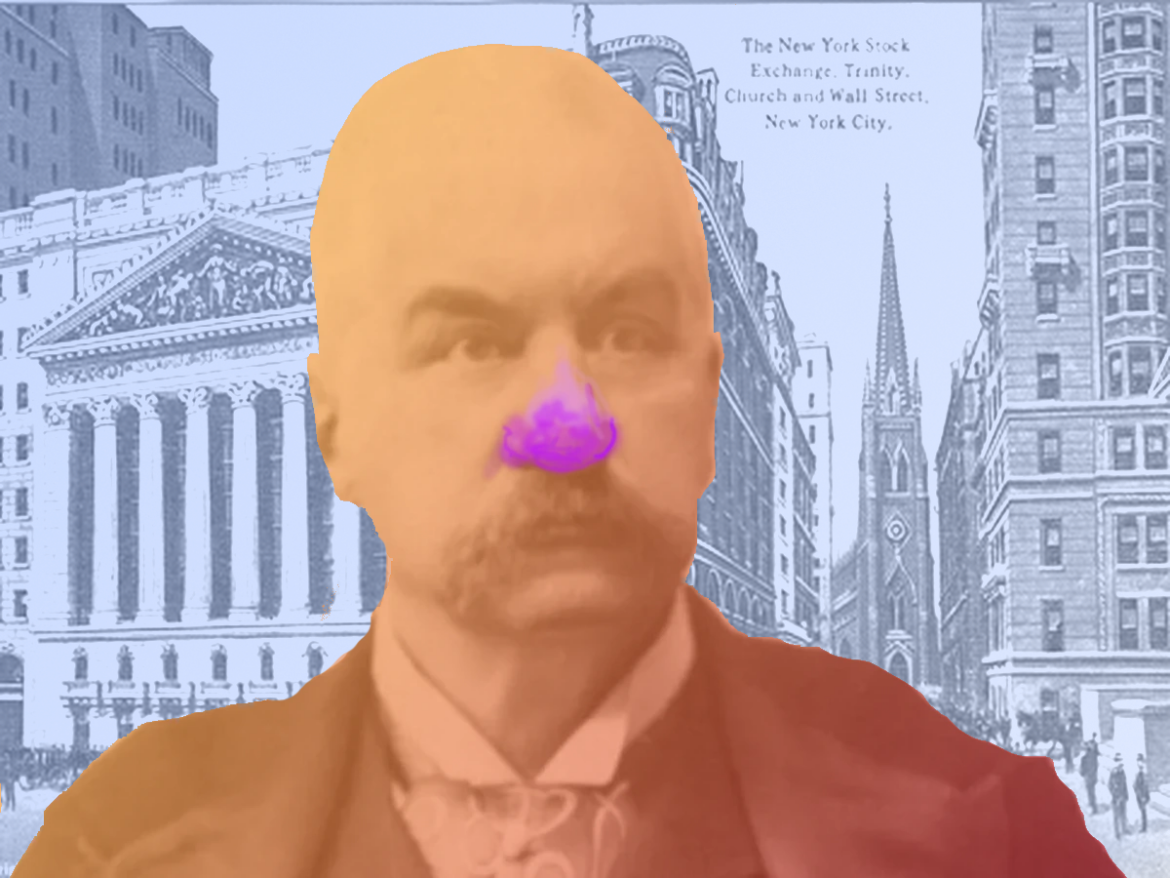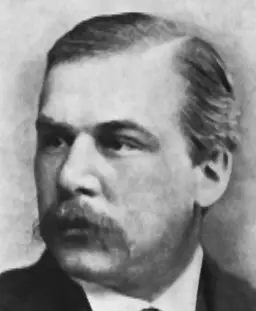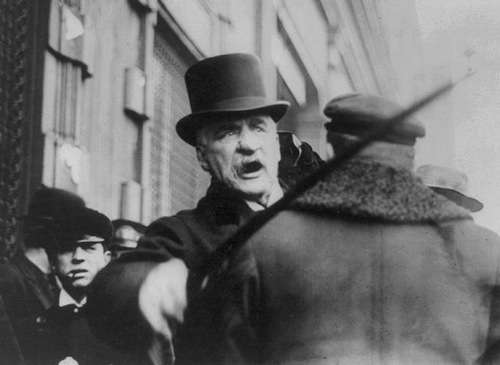J.P. Morgan, the Gilded Age’s most powerful and feared financiers, had an Achilles heel – or nose, rather.
He became so rich and powerful he saved the federal government from default in 1895 and bailed it out 12 years later, ending the Panic of 1907. He headed an interlocking series of trusts that controlled many of the major industries in the United States. And he created General Electric and helped form U.S. Steel, International Harvester and AT&T.
Newspapers frequently attacked him as a robber baron. But he was way more sensitive about his ugly nose than about his business practices.
J.P. Morgan
J.P. Morgan was born on April 17, 1837 in Hartford, Conn., to an old New England family. His father, Junius Morgan, founded J.S. Morgan & Co. with George Peabody.
Young Morgan was physically imposing, 6’2” and muscular with piercing eyes. As a young man, people considered him attractive, though he was shy and socially awkward. He married the only woman he ever loved, Amelia “Mimi” Sturges, in 1861, but she died of tuberculosis four months after their wedding.
J.P. Morgan then made a practical choice of a wife, marrying Frances Tracy in 1865. They had four children, but he became a serial philanderer as he accumulated wealth and power.
Purple Cauliflower
From childhood, J.P. Morgan suffered from acne rosacea, which caused redness in his face and ruptured blood vessels on his nose. In middle age, the rosacea caused rhinophyma, which resulted in growths, lesions and pockmarks on his nose.
J.P. Morgan’s nose looked like a purple cauliflower. It was an awful handicap for a self-conscious man who wanted to impress women.
His biographer, Ron Chernow, wrote that people who knew him linked his terrible temper to his nose.
The nose certainly contributed to an insecurity and lack of social ease that were thinly masked by a barking voice and tyrannical manner.

Puck magazine cartoon skewering .P. Morgan’s outsize influence on the U.S. economy — and his pink nose. Courtesy LIbrary of Congress.
Livernose
J.P. Morgan tried all kinds of cures, none of which worked. He pretended his nose didn’t bother him. When someone suggested surgery, he replied, “Everybody knows my nose. It would be impossible for me to appear on the streets of New York without it.”
He also described his enormous purple nose as, ‘part of the American business structure.’
But his close associates knew his sensitivity about his nose. Newspaper magnate Joseph Pulitzer often published caricatures him with an enormous nose. Morgan asked him to stop.
John Warner ‘Bet-a-Million Gates’ called him Livernose. Morgan then blackballed him from the Union League and New York Yacht clubs.
Morgan carefully controlled his public image. He always made sure photographers touched up his nose in photographs. He lashed out at photographers who tried to take his picture in the street, and he would cane with a walking stick any photographer who came near.
The Morgan Excrescence
The public didn’t know of his deformed nose, and it came as a shock to meet him face to face.
The nose stunned art dealer Joseph Duveen when he first met J.P. Morgan.
“No nose in caricature ever assumed such gigantic proportions or presented such appalling excrescences. If I did not gasp, I might have changed color. Morgan noticed this, and his small, piercing eyes transfixed me with a malicious stare.”
He overcompensated for his handicap by hiring attractive men. “A homely man had no chance of being selected a Morgan partner,” wrote an early biographer.
His associates warned others about his sensitivity. A partner, Dwight Morrow, brought him home one day, having warned his wife Betty and children not to mention the nose.
Betty then asked him, “Do you like nose in your tea, Mr. Morgan?”
J.P. Morgan died on March 31, 1913. He took to his grave his resentment over the phrase, “ruby-visaged magnate.”
With thanks to The House of Morgan: An American Banking Dynasty and the Rise of Modern Finance by Ron Chernow. This story was updated in 2024.





7 comments
[…] Islands lie just off the coast and on one you can see the remains of the West Island Fishing Club. J.P. Morgan and President Glover Cleveland once belonged as […]
[…] as a breezy summer read and as a reminder that the rich and famous aren’t always what they seem. J.P. Morgan, for example, regularly attended and financially supported the island’s Episcopal churches. But […]
[…] as a breezy summer read and as a reminder that the rich and famous aren’t always what they seem. J.P. Morgan, for example, regularly attended and financially supported the island’s Episcopal churches. But […]
[…] Sept. 16, 1920, an Italian immigrant named Mario Buda parked his horse-drawn wagon across from J.P. Morgan and Co. and down the street from the New York Stock […]
[…] Sept. 16, 1920, an Italian immigrant named Mario Buda parked his horse-drawn wagon across from J.P. Morgan and Co. and down the street from the New York Stock […]
[…] Junius Morgan was a wealthy Hartford banker living in London, father of the famous robber baron J.P. Morgan. […]
[…] In the end, Jim Fisk made a fortune through bribing government officials, smuggling cotton through the Union blockade for northern mills and selling Confederate bonds to European investors. But he never sold shoddy goods to the Union Army, as did war profiteers like J.P. Morgan. […]
Comments are closed.